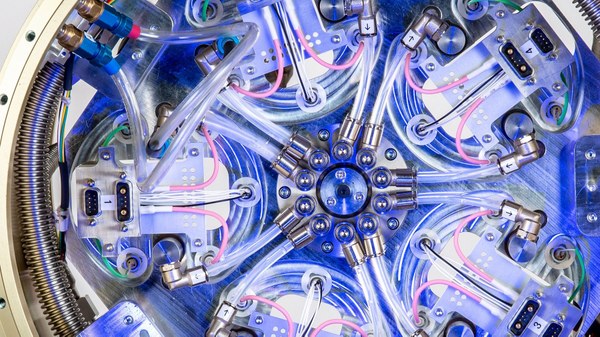DeParT – utilising particles at high temperatures to generate heat and fuel


The DeParT project focuses on the research and development of particle systems and their components for solar thermal tower power plants. The primary goal is to improve the CentRec® centrifugal particle receiver, developed at the German Aerospace Center (Deutsches Zentrum für Luft- und Raumfahrt; DLR). The project also addresses fundamental questions on the construction and operation of the receiver at a commercial scale, with the aim of enabling rapid and reliable technology transfer to industry. In addition, DeParT is examining the suitability of CentRec® and alternative receiver concepts for solar chemical processes. Another focus is the conceptual analysis of electrical particle heater systems, which convert electricity into heat for power-to-heat applications, including industrial processes.
The DLR CentRec® receiver – converting solar radiation into high-temperature heat

The CentRec® receiver converts concentrated solar radiation into high-temperature heat using small ceramic particles. Its core component is an inclined rotating drum, with an opening oriented towards the solar field. The particles enter the drum from above and are pressed against its inner wall by centrifugal forces generated during rotation. During operation, solar mirrors reflect the concentrated sunlight into the interior of the drum, heating the particles. Depending on the drum’s rotational speed, the particles slide down towards the outlet at varying speeds.
As part of the DeParT project, researchers are developing a digital twin of the receiver that will allow them to simulate its operation on a larger scale. This approach allows for precise determination of thermal losses and potential material deformations as a result of particle impacts and heat effects. Additionally, the project is investigating the extent to which wind increases convective heat losses and impairs receiver efficiency, with the goal of identifying targeted opportunities for improvement.
DLR is one of the world's leading research institutions in the field of particle systems. The DeParT project brings together researchers from the DLR Institutes of Solar Research, Future Fuels, and Materials Research (today DLR Institute of Frontier Materials on Earth and in Space), combining expertise in materials research, solar process engineering and component development. Through this project, DLR aims to further strengthen its leading role in this area.
DeParT project – utilising particles at high temperatures to generate heat and fuel
- Duration: 1 January 2024 to 31 December 2026
- Leading institute: DLR Institute of Solar Research
- Project type: Core funding
- Funding body: DLR Energy Programme Directorate



